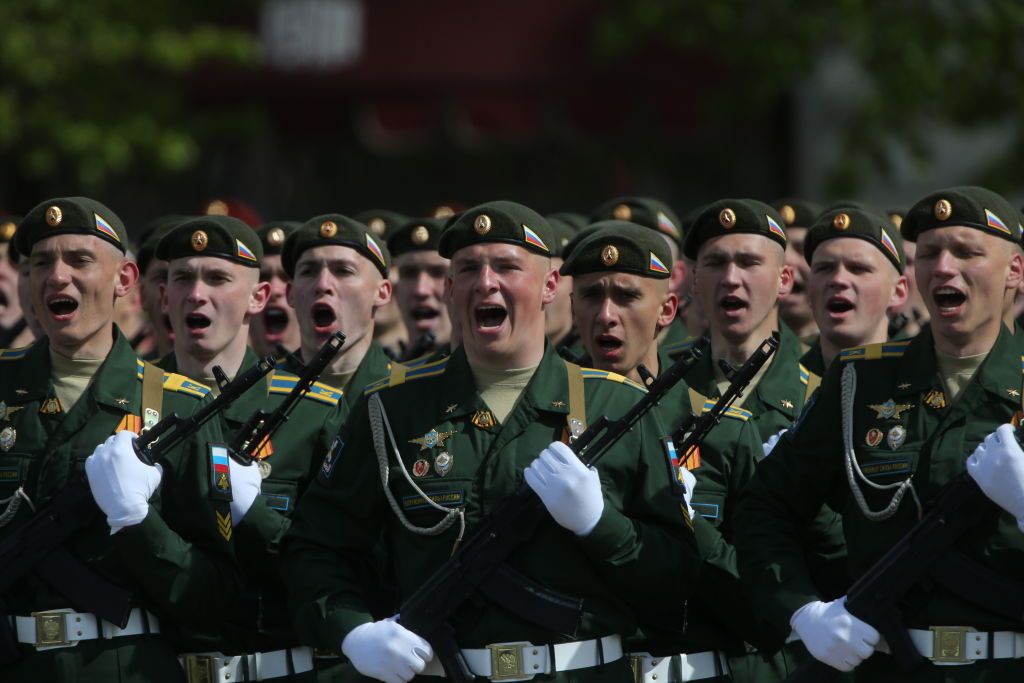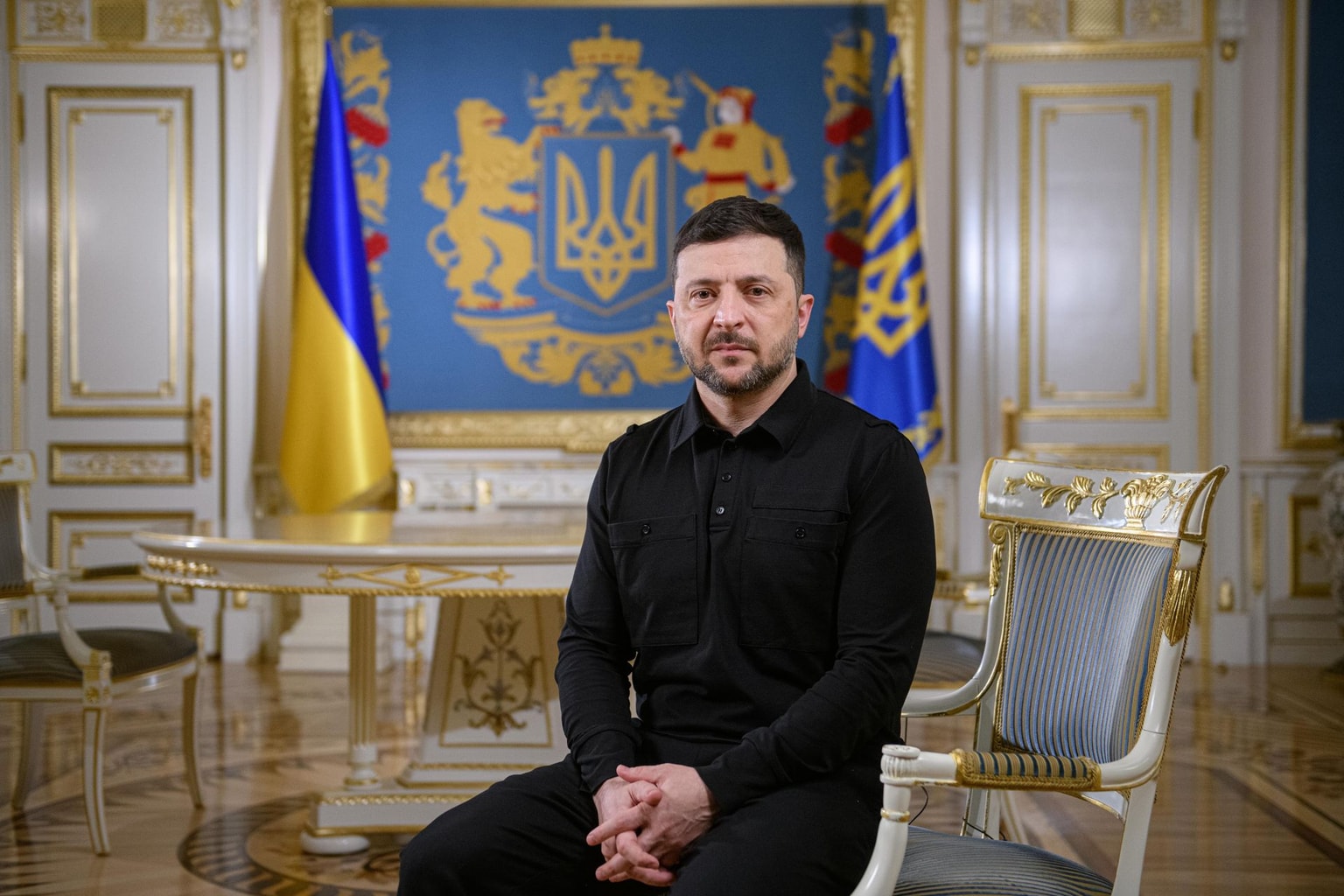
Beneath the problematic surface, the New York Times’ Kursk reporting reveals a deeper moral rot
A Russian soldier of the Akhmat Chechen Special Forces Unit walks near destroyed military vehicles in Kazachya Loknya, Kursk Oblast, Russia, on March 18, 2025. (Tatyana Makeyeva / AFP via Getty Images)

Francis Farrell
Reporter at the Kyiv Independent
Editor’s Note: Following the publication of this opinion piece and another article on our website criticizing The New York Times, the publication responded to The Kyiv Independent with a statement sent via email. The full response has been included in this article.
I really don't want to write what I'm about to write. As someone who regularly tries to get close to the active combat zone of Russia's war against Ukraine, tell the stories of those in the middle of it — soldiers and civilians — and bring them out to the wider world despite the physical danger involved, I have endless respect for colleagues around the world who do the same.
I never thought that I would now be the one needing to speak up about a colorful, well-written, and beautifully photographed piece of war journalism. But yet here we are.
Here we are because on July 12, The New York Times released a field report from Russian territory in Kursk Oblast, after it had been retaken from Ukrainian forces in March this year. The piece ran — and still stands there on the Times website — with the following headline: “A Landscape of Death: What's Left Where Ukraine Invaded Russia.”
In these fraught times, the New York Times has made a seemingly deliberate and very self-aware choice to paint a picture of this war without the understanding of who is in the right and who is in the wrong.
I want to believe that I'm tolerant and flexible, and understand that different publications in different countries might look at this war a little bit differently than us here at the Kyiv Independent. And overall, of course, we understand and place a very high value on the importance of the world not forgetting about this war.
We now stand at one of the most crucial moments in Russia's full-scale war — where the events of the next few months, particularly in the United States, could play a deciding role in whether our home, Ukraine, exists as an independent country in a few years’ time or not.
In these fraught times, the New York Times has made a seemingly deliberate and very self-aware choice to paint a picture of this war without the understanding of who is in the right and who is in the wrong.
On the surface, the article by the German-Russian Magnum photographer Nanna Heitmann is very well put together — impressive writing, emotional quotes from suffering civilians and soldiers, the proper caveats on casualty figures stated by Russian authorities, and, of course, Heitmann’s compelling photography, for which she has gained numerous accolades in her career so far.
There's just one small problem. You could take this text, these images, flip it and make it about a Ukrainian settlement after liberation from Russian forces, and it would read the exact same way.


This shouldn’t need to be spelled out — this piece proactively creates a narrative of moral equivalence in a war where the moral landscape could hardly be more black and white.
It seems like it should be obvious to anyone — but for some reason, not to the New York Times editorial board.
Let’s talk a little bit about access. Having worked in this field for almost three years now, I can tell you that soldiers don’t usually want to have to babysit journalists in a war zone. That’s why embedded front-line access is not always an easy thing to come by, let alone for a photographer working for the newspaper of an “unfriendly nation.”
There are three reasons why soldiers are ready to bring journalists to the front line: either they’ve received an order from higher up to do so, they see a direct personal benefit in bringing these journalists along, or there’s simply a great deal of personal trust — or perhaps even friendship — with the journalist. Sometimes it’s a combination of those factors.
When I went to Kursk Oblast myself in the weeks after Ukraine’s incursion last year, I went twice: once unofficially, with my soldier friends, and once on an official press tour organized by the Ukrainian military.
In this case, Heitmann, the photographer and reporter, was embedded with units of the Akhmat Chechen Special Forces Unit — better known as the Kadyrovites.
This unit forms the core of the personal military of the brutal Chechen warlord Ramzan Kadyrov, and these soldiers, having taken part in Russia’s full-scale invasion of Ukraine since the very beginning, have been implicated in numerous war crimes against civilians and prisoners of war in Ukraine as part of the aggressor’s army.
This isn’t the first time that Heitmann has worked with Akhmat either. Her work previously sparked outrage in Ukraine when an image of a wounded soldier at one of Akhmat’s field hospitals near occupied Bakhmut was placed alongside the image of a Ukrainian child — in a diptych presented by World Press Photo in an attempt to show the duality of war — or something ridiculous along those lines.
Would it be seen as acceptable by the New York Times editorial board to have their journalist embedded with a Nazi German SS unit on the battlefields of Eastern Europe in World War II?
Here, we have one of the most notoriously brutal military units of this war, the elite guard of a fascist regime within a larger fascist aggressor state — giving this Western reporter repeated, exclusive access to the front line.
Once again: three reasons. An order from the top, perception of personal benefit, or simply high levels of trust and/or friendship. Feel free to make your own conclusions.
I really hate the fact that I have to go there — but would it be seen as acceptable by the New York Times editorial board to have their journalist embedded with a Nazi German SS unit on the battlefields of Eastern Europe in World War II?
Going forward, I could nitpick at the text: the headline “A Landscape of Death,” apparently caused by Ukraine’s “invasion of Russia;” the quotes from civilians, proactively chosen, describing Ukraine being pushed into a war of “brother against brother;” the lack of any critical context about the nature of the unit that Heitmann was embedded with; or about the fact that this destruction was only caused as a consequence of Russia invading Ukraine in the first place.
But at the end of the day, this is just a very simple question of moral fiber.
As a flagship Western media outlet, in a country that has long been the center of the free world – but is now facing a moral crisis of its own – The New York Times has an inherent duty to document these historic events with some level of moral grounding.
I’m not saying that no reporting should be done from Russia. When thinking about how to do it right, I think of the brave and dignified BBC correspondent Steve Rosenberg, who is there, occasionally rubbing shoulders with the Kremlin inner circle, but doing so with the clear, focused understanding that he is covering the attempt by a massive, tyrannical empire to annihilate an independent state.
And once again, the last thing I want to do is to look like I’m attacking a colleague. But here, instead of reporting like that of Rosenberg, what we get from Heitmann and The New York Times is reporting more along the lines of that of Anastasia Trofimova, the Russian “independent” filmmaker who — after directing documentaries with Kremlin propaganda channel RT — made her film, “Russians at War,” about the “human side” of those soldiers who signed up to kill and torture, steal and rape in Ukraine for money. It’s a disappointment but not a surprise that Trofimova and Heitmann have worked closely together on numerous occasions.
Which brings me back to my own trips to Kursk Oblast.
Given the adrenaline of Ukraine finally bringing the war to the territory of the aggressor state, the fact I work for a Ukrainian outlet, and that I know people who have been killed by Russia’s war — my reporting might have been biased and perhaps unsympathetic to the Russian civilian victims of Ukraine’s incursion. And yet, when we were on the territory of another sovereign state, I understood that something here was inherently different.
For that reason, I said as much in my reports. I explained in our video story that our access was controlled by the Ukrainian military, and that this was an unprecedented situation — for a Ukrainian war reporter to be entering another country with an occupying army, speaking to civilians to whom the soldiers personally brought us to. In this managed environment, nothing I saw or heard about the treatment of the locals could be taken as representative fact.

The historic moment demanded that we report on this. But there were ethical problems, and we acknowledged them from the outset.
Neither in this article from Heitmann, nor in the other work she has done inside occupied Ukrainian territory, is any of that self-awareness evident.
Perhaps including it would ruin her next opportunity to embed with Akhmat. Perhaps it wasn’t there in the first place. I don’t know.
What I do know is that this kind of reporting is inherently immoral. And in a time where Americans — from ordinary voters, to thought leaders, and up to the president himself — are more vulnerable to “both-sidesing” narratives on this war than ever, an approach like this could have real consequences for the future existence of Ukraine.
The New York Times, you can and must do better.










